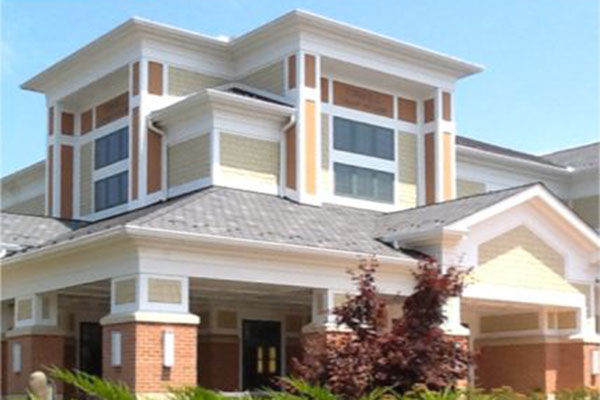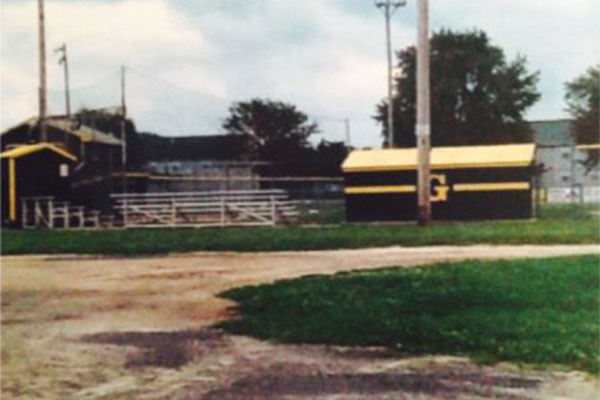


Perceptions of home
Photos of Georgetown public spaces offer insights into residents' views of hometown
8:34 a.m., May 5, 2015--Photographs capture moments in time in ways minds are not always able, igniting strong feelings and memories when viewed.
In her master’s thesis, “‘That Street’s for Them Not Us’: Perceptions and Experiences of Public Space in Georgetown, Delaware,” University of Delaware alumna Hannah Jacobson used photo elicitation — an interview method that uses images to evoke a response — to explore how different social groups felt about certain public spaces in the town.
Research Stories
Chronic wounds
Prof. Heck's legacy
During interviews, Jacobson showed study participants photographs of familiar landscapes like the public library, local schools and athletic fields, the downtown historic district and nearby neighborhoods and stores. She then asked study participants to talk about those landscapes, noting that photos encourage deeper and more thoughtful responses.
She classified the photos into four categories — residential, governmental, cultural and activity spaces — and polled male and female participants from the town’s three main social groups: white, Hispanic and African American. Based upon the participants’ responses, Jacobson observed patterns in how the residents of Georgetown felt about the public spaces around them.
Change and challenges of diversity in a small town
Georgetown has seen significant population changes in the past 30 years, with an influx of retirees and growing number of immigrants from Latin America. The Hispanic population in Georgetown, for example, has grown from two percent in 1990 to 48 percent in 2010.
“All across the country, some immigrants are bypassing classic destinations, big cities like New York and Chicago, and going to smaller, rural towns where there are jobs and a quality of life they desire,” said Jacobson, who earned her master’s degree in geography, which is housed in the College of Earth, Ocean, and Environment.
A pull factor for immigrants in southern Delaware, she continued, has included jobs available in agro-business, specifically the poultry processing and service industries. However language, socioeconomic status and cultural background have led to difficulties in all ethnic groups forming a common place identity.
Perceptions of space and landscape, as well as connections to those spaces via routine activities, are shaped by each ethnic group’s history and experiences in Georgetown, as well as by each group’s idea of what the town is and could be.
“Like many other communities dealing with an increasingly diverse population, Georgetown is figuring out how to craft a shared place identity, where everyone can feel like they belong. Spaces have palpable histories associated with them — histories that carry the baggage of the past and insecurities of the present, histories that define certain neighborhoods, stores and buildings as places where ‘we’ belong and others as places where ‘they’ belong,” said April Veness, associate professor in the Department of Geography and Jacobson’s thesis adviser.
Jacobson's study revealed many instances of how public spaces in Georgetown are differentially perceived and experienced. One example of this is the public library. For one white respondent, the public library was a known space that evoked pride because her family had donated money to help provide free computers, though she did not use them. To a Hispanic respondent, the public library was a positive but ambiguous space. He visited the library but had no idea he was allowed to use the computers there until he enrolled in community college and understood the concept of free access to public resources. African-American respondents, on the other hand, frequently used the library and its computers, viewing this public space as an integral part of their community.
Varying connections to public spaces also were apparent when respondents spoke about the nearby Little League fields. One participant fondly recalled playing ball there as a child, while a second participant described his childhood longing to join the other children using that space. To him, the Little League fields were just out of reach for two reasons: he was unable to attend practices because he babysat his sister while his parents worked and his family could not afford the registration fees and equipment costs required to play.
Other spaces were more uniformly inclusive and mutually supportive. Georgetown Middle School, for example -- which previously served as the high school before being repurposed into a middle school --was viewed as an inclusive space. In particular, many Hispanic participants noted that the school was a transitional and accepting place where they made friends and created positive memories.
“From the participants in Hannah’s study, we learn that differences in ethnic and socioeconomic backgrounds generate multiple, different and sometimes conflicting perceptions and uses of public spaces,” explained Veness, whose UD course Global At Home precipitated Jacobson’s study and who has had ties to Georgetown since the late 1980s, studying the immigrant population in southern Delaware emigrating predominantly from Guatemala.
“By creating inclusive, inviting spaces that welcome all residents, Georgetown can come together,” continued Jacobson. “It can demonstrate to other towns in similar situations what can be done to successfully integrate diverse populations.”
Jacobson, who now serves as an environmental internship program adviser at Rowan University, was awarded the Department of Geography Teaching Assistant Award during CEOE Honors Day festivities at the Hugh R. Sharp Campus in Lewes on May 1.
Article by Cori Ilardi









